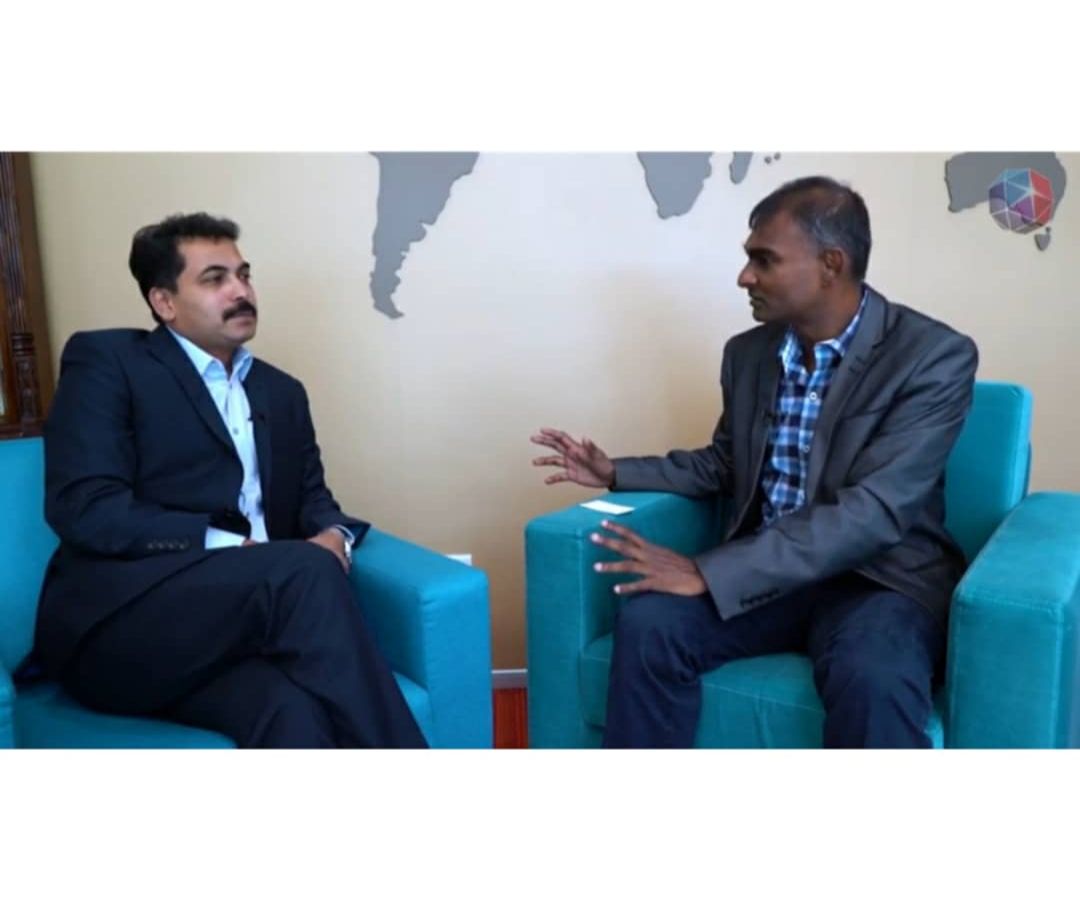Embracing Digital To Power Growth

Insights from the CEO Conference 2019
MALAYSIA is heading towards a digital economy, but many businesses, especially small and medium enterprises (SMEs), are not prepared to be part of this digital landscape yet.
At the CEO Conference 2019 with its theme of ‘Embracing Digital to Power Growth’, Leaderonomics chief executive officer (CEO) Roshan Thiran spoke about founders setting up their companies and having everything figured out, but now they have to change the way they operate their business.
“We have to constantly change. If not, we face the prospect of living dangerously, which is the tagline for the conference,” said Roshan.
Embracing digital to power growth
Like it or not, it is time for SMEs to get their act together and take digital approaches seriously.
First thing to do is for SMEs to educate themselves and spend time with different solution providers. They should start by addressing pain points, engaging in pilot projects, and developing a long-term vision.
“SMEs are critical for the country as they help drive GDP growth, and services and manufacturing play a major role. Their GDP contribution has risen from 22% to 27%.
According to the SME Masterplan 2012‒2020, SMEs are expected to arrive at a target of 41% of the GDP by 2020,” said Dr Nikolai Dobberstein in his keynote address. Dr Dobberstein is A.T. Kearney’s head of communications, media and technology practice in Asia Pacific and also the managing partner of the Malaysian practice.
“98% of companies in Malaysia are SMEs, while 66% of employment is offered by these companies as well,” said Dr Dobberstein, who is involved in business and digital transformation programmes of technology companies and telecom operators in Southeast Asia, India, the Middle East and Africa.
Mining the gold in your organisation
It is widely believed that data is the new gold, and if businesses could harness the power of data – if they could collect data and analyse it to uncover trends and insights – it would really give their business the added boost to achieve a higher level of success.
Example 1:
“My husband and I run a restaurant, which serves modern European cuisine without alcohol. When we started the business, it was just the two of us. When the business stabilised, we started to think about how to do personalisation,” said Copper Restaurant CEO and co-founder Zeehan Zahari.
“When diners come in, we will take note of their preferences, such as vegan or paleo diet. When they come in the next time, their preferences are already recorded in the system, so we will change the menu according to their dietary requirements without them asking. This created a lot of loyalty among our customers,” Zeehan added.
“The next step was to create a loyalty programme and we digitalised that. I did a lot of number crunching and then everything changed. We are probably 22% above industry average, even compared to establishments that serve alcohol,” shared Zeehan.
Example 2:
“Initially, we operated our business the traditional way. We made decisions based on hunches. We didn’t know where our business came from. Then, we started to think about digitalisation. We had to sit down and look at the numbers,” said EGAN Equipment and Parts Sdn Bhd co-founder, Nicholas Gan.
“It wasn’t easy, but we did the right thing. For example, we thought we should open a branch in the northern states of Peninsular Malaysia, but when we analysed the data, we found out that the state which gave us the second highest sales was Sarawak. So, we should open a branch in Sarawak, in East Malaysia instead!” revealed Gan.
Zeehan Zahari and Nicholas Gan were part of the first panel discussion on Mining the Gold in Your Organisation – How to Find the Gold that Exists in Your Company, Extract It and Profit From It.

Delegates at the CEO Conference 2019
Leveraging technology and digital to grow and scale
There are many benefits to using technology to grow and improve the company.
First of all, employees are able to do more with less, thus efficiency is increased. Secondly, they are able to get to know their customers better.
“The digital economy in Malaysia is not small. In 2016, it contributed to 18.3% of the GDP,” said Malaysia Digital Economy Corporation (MDEC) vice president of enterprise development consulting, Gopi Ganesalingam.
According to Telekom’s head of SME business, Mohamad Yusman Ammeran, the ICT usage of Malaysian SMEs was highest for computing devices and connectivity, limited for front-end business processes, and low to medium for back-end business processes.
“From day one, you must have a vision, which should include how you are going to scale up,” said KAT Technologies founder Khairol Anuar Mohamad Tawi. “We had 14 branches, and it was getting harder to keep track of everything.”
Eventually, KAT developed its own system, KATsys, a sophisticated software system that allows for stock tracking from the point of receipt up to the point of sale. KAT was part of the Global Acceleration and Innovation Network (GAIN) programme by MDEC, which helps SMEs scale and grow.
READ: Driving Value With Digital Transformation Initiatives
Case study 1: Asia Pacific University
At the CEO Conference, two case studies were presented.
The first was on Asia Pacific University (APU), where the founder, Dr Parmjit Singh explained how he grew Asia-Pacific Institute of Information Technology (APIIT) from a 12,000 square foot establishment on the 15th floor of Wisma Semantan in 1993 with 60 students, to APU with its own 2.1 million sq ft campus in Technology Park Malaysia with 12,000 students from over 130 countries.
“Focus is extremely important. I always focused on technology and never deviated from it. People have asked me, why don’t you have law or dentistry, but I never did,” said Dr Parmjit.
“The myth that education is good business is not true. There are so many regulations, accreditations, etc. An educational company has to be fit for business like any other business, and it has to be run very efficiently,” he added.
“The fees we charge are in the second quartile of private universities, but the cost per student is in the first quartile, because technology is not cheap. Our two core areas are engineering and IT, which are among the most expensive. My staff cost a lot too – 96% are veterans and experts who have worked in the industry they specialised in for many years.”
“Nonetheless, we are one of the most profitable in the business. We achieve this by being organised. We use technology as a backbone to run the business and the campus. The profits are a by-product of our quality and reputation.”
“We only have one KPI overriding the whole university, and that is employability. If employers are taking my graduates, it means we are doing the right thing.”
The success of APU is proof that Dr Parmjit’s philosophy and strategies work brilliantly.
Case study 2: Pos Malaysia
Next, Pos Malaysia’s group head of digital, Sangeetha Ranganath presented how Pos Malaysia is evolving its business model. The postal service has existed in Malaysia since the 1800s, and the organisation had to transform from a very traditional business to a modern one that uses all available aspects of technology to cater to changing consumer demands.
They are undergoing a digital transformation to use technological platforms to engage seamlessly with customers and provide transparency. Pos Malaysia has invested in an automated hub with sorters and warehouse management systems, while alternative delivery options are also provided now.
The post office is going from offline to online, and automated bill payment services are also available. The development of a mobile app is in the pipeline.
How can we drive change in business?
The final panel discussion for the day was on the topic of how entrepreneurs can find out what their mistakes are and drive change in their business, as well as understanding how culture can impact the ability to leverage technology.
The panellists were QEOS Technology Sdn Bhd founder and CEO, Dr Gabriel Walter; Comfort Taxi managing director Siti Faradilah Aslah; and BloomThis co-founder and CEO, Giden Lim.
“My family was in the florist business, and I thought it was a good idea to do the business online. The first time I did it, customers were not attracted to it. Then I improved on the website, but still it was the same. After that, I found out that MaGIC (Malaysian Global Innovation and Creativity Centre) was offering courses, so I signed up to learn why things were not working,” revealed Lim.
“The incremental learnings and the things we do along the way are important. I chose to stay hungry,” Lim added. “I found out the entire flower delivery experience is important to the customer. We have to deliver the perfect experience seamlessly, especially when the recipient receives the flowers.”
“You don’t need to do it alone. Two heads are better than one. Trust and bonding are important. People look up to you not because they fear you, but because they believe in you and your vision,” said Dr Walter. “The ones that trust you and follow you are your most powerful assets.”
“When we began, we always went for the best, in terms of technology. But over time, we realised that the most difficult thing to do was to simplify complexity. We trained people to be more creative,” Dr Walter added.
InsideRisk
Delegates were also given a preview of InsideRisk by Leaderonomics Digital head, Sashe Kanapathi. InsideRisk is an immersive simulation that helps SMEs and their leaders dramatically improve their trust-building and critical thinking abilities through a critical hostage situation.
The CEO Conference 2019 brought together founders and CEOs of SMEs who have succeeded and leveraged on digitalisation to bring themselves up to the next level, to share their knowledge and experiences with delegates.
Industry experts who shared their know-how also benefited all who were present. It is hoped that all those who were present brought back priceless nuggets of new learning and information to their respective organisations.
Khor Hui Min is a writer, poet, nature lover, face painter, photographer, yoga enthusiast, and meditator. To connect with her, send an email to editor@leaderonomics.com.
Business
This article is published by the editors of Leaderonomics.com with the consent of the guest author.





